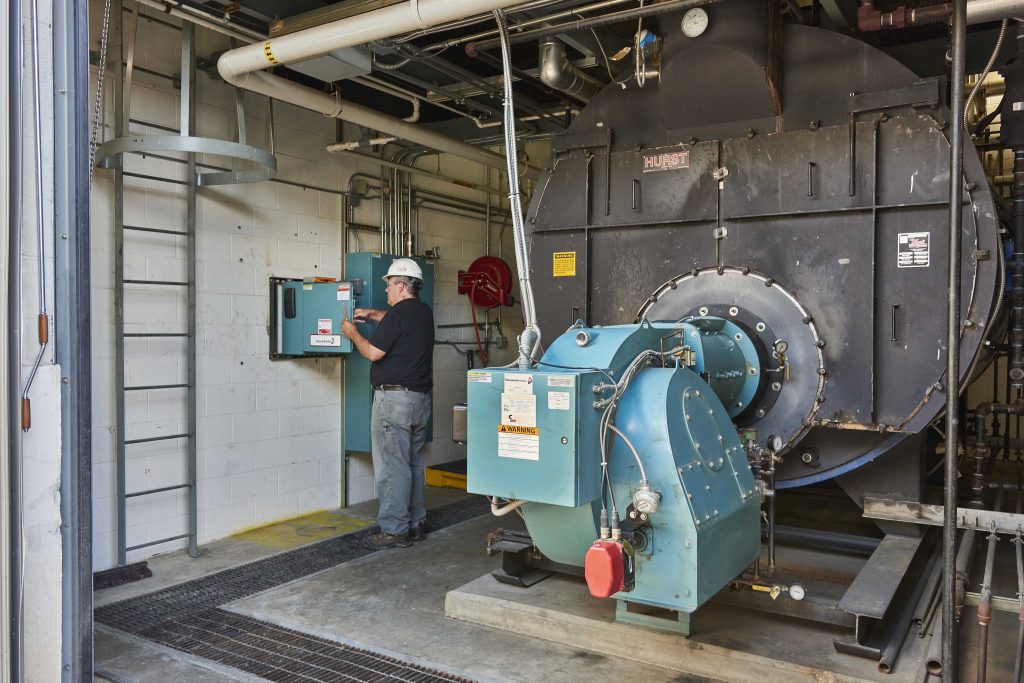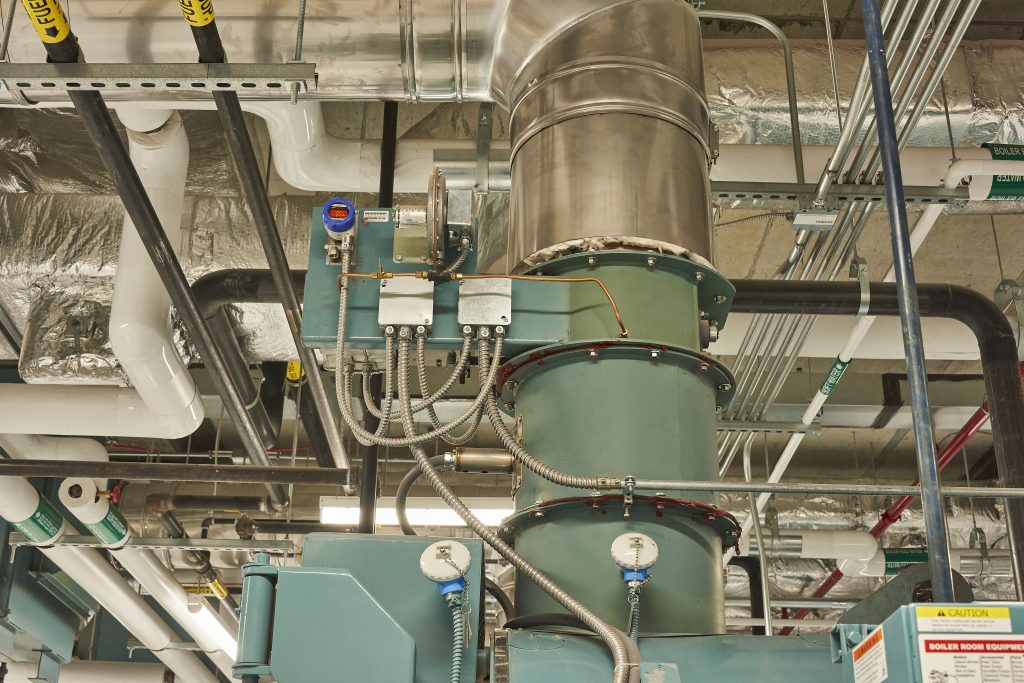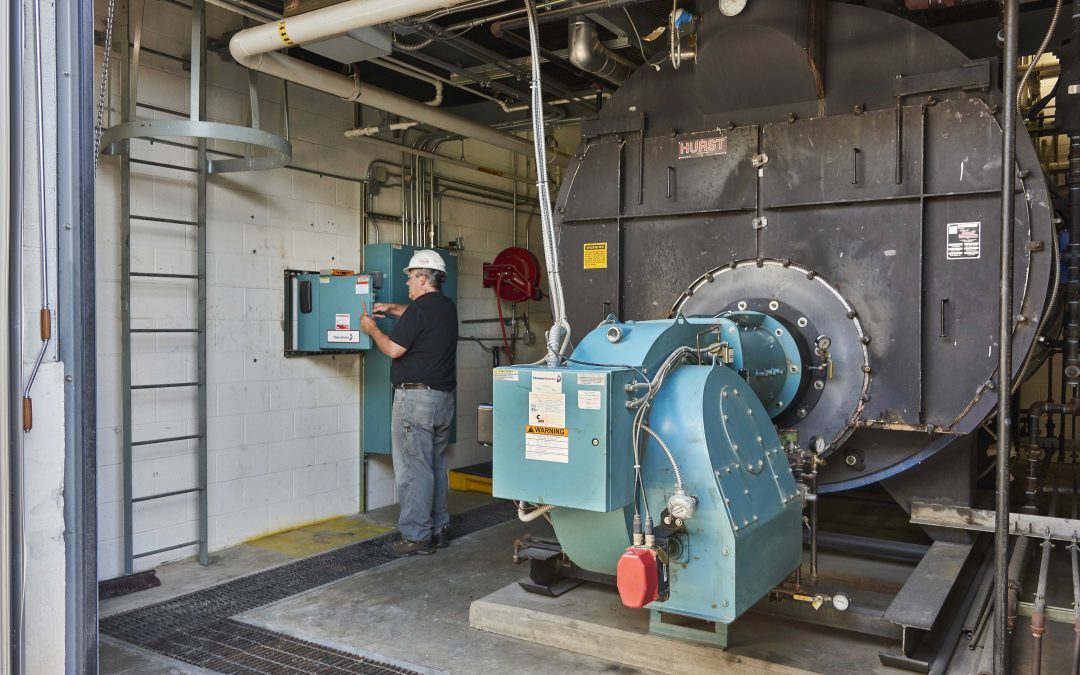One of the best upgrades a facility can make to breathe new life in their boiler system is boiler updates. A common update includes replacing an old burner with a new burner that has a high turndown capability. Today’s burners are designed for high-efficiency, high turndown and low emissions. While older burners typically operate in a narrow turndown range, high turndown burners continue to operate at lower firing rates, which cuts down on cycling and the additional cost of energy that comes with it.
Can I benefit from a burner upgrade?
A burner evaluation starts with a qualified technician inspecting and testing the burner. First, ensure it properly tracks through its modulating range and combusts without excessive O2, and CO, shutting down and purging both pre and post-firing. If it does not, and it can’t be confidently adjusted, replace the burner. The proper burner will need to be selected specifically for the application, and match the furnace in which it is firing. This is most important because it’s the furnace that provides the time for combustion to complete.
Breathing new life: Considerations to reduce fuel usage for both a new or existing burner:
Parallel Positioning Actuators

Include parallel positioning actuators for fuel and air regulation, replacing single point positioning linkages. An efficient burner provides the proper air-to-fuel mixture throughout the full range of firing, without constant adjustment. Many burners with complex linkage designs do not hold their air-to-fuel settings over time. Often, they are adjusted to provide high levels of excess air to compensate for inconsistencies in the burner’s modulation. This high excess air costs extra fuel dollars.
For an alternative to these complex linkage designs, install servomotors with parallel positioning. Servos will independently control the quantities of fuel and air delivered to the burner head. This control system allows for easy tune-ups and minor adjustments while eliminating hysteresis, or lack of repeatability. This will result in accurate point-to-point control while saving many fuel dollars annually.
Oxygen Trim System

Another retrofit consideration is the use of a good Oxygen Trim System. As you know, a burner needs fuel and air to combust. The combustion air fan is delivering air at a specific rate regardless of the changing conditions in the boiler room. This means when the boiler room gets colder the air gets more dense. As the room heats up, it gets less dense. If the fan discharge is not regulated to account for these density changes, the burner can go from excessively high excess air (loss of energy) to excessively short of air. Thereby forming
dangerously high CO levels and possibly explosive unburned carbon.
The O2 Trim system accounts for these changes, automatically adjusting the air damper or fuel valve to account for the irregularities. This retrofit saves energy dollars and greatly improves safety.
Variable-Speed Drive
Adding variable-speed drive (VSD) enables a motor to operate only at the speed needed at a given moment, rather than a constant RPM regardless of load demand. This speed variance results in the elimination of unnecessary electrical energy consumption because as the speed lowers, the power consumed decreases as a cube function of the speed.
A VSD can be used on any motor but is commonly found on boiler feed and circulating pumps and combustion air motors of more than 5 HP. These drives also exhibit quieter operation and softer starts compared to a standard motor, thereby reducing maintenance costs by decreasing the stress on the motor shaft and associated bearings.
Lead-Lag Control
Incorporating lead-lag control of multiple boilers that are incrementally sized for the load can substantially reduce energy costs due to a reduction of boiler cycling. Remember, every time a boiler cycles off, it goes through a pre-and post-purging cycle before reigniting. This means that ambient air is blowing through and across the heating surfaces of the boiler for approximately two minutes, purging valuable BTUs into the atmosphere.
Advanced Controls
 Advanced control systems are PLC-based platforms incorporating burner management, combustion control and monitoring in one integrated package. By installing an advanced control system, a facility can expect to see better performance, enhanced safety, lower maintenance and reduced operating costs.
Advanced control systems are PLC-based platforms incorporating burner management, combustion control and monitoring in one integrated package. By installing an advanced control system, a facility can expect to see better performance, enhanced safety, lower maintenance and reduced operating costs.
A High-Turndown Burner
Boiler short-cycling occurs when a boiler quickly satisfies the system demand and then shuts down until heat is again required. This results in numerous pre and post-air purges of the furnace for safety reasons, literally blowing countless Btu’s out the stack. Short-cycling drives up needless fuel costs. Energy losses of 15% are not at all uncommon when cycles exceed ten (10) per hour.
The solution to this problem is retrofitting a new High Turndown Burner with 10:1 turndown capability. In addition to this solution consideration, the boiler may also be oversized for the load especially during certain months of the year when specific loads such as comfort heating are shed.
Remember, even with the latest technology, regular maintenance is still necessary. Properly servicing a boiler system on a consistent basis will maintain its efficiency and lower fuel costs for years to come.

